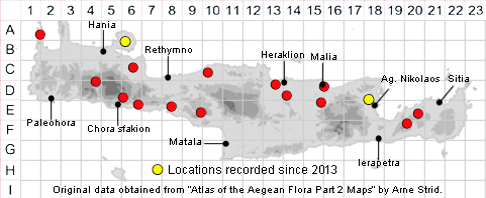
ALLIUM CHAMAESPATHUM
Family and Genus:- See- ALLIACEAE/Sect. ALLIUM
Common Names:- None
Homotypic Synonyms:- None
Meaning:- Allium (L) The ancient Latin name for garlic.
Chamae (Gr) On-theground, lowly, low-growing, prostrate.
Spathum (Gr) Sheath.
General description:- Bulbous perennial plants, usually smelling strongly of garlic
or onion.
Bulb:-
1) 1·8-2·5 cm diam, ovoid, without bulblets, outer layers papery, thin.
Stem:-
1) (10-)25-30(-60) cm.
Leaves:-
1) 2-3, up to 30 cm × 4 mm, fistular, canaliculate above, almost withered at
anthesis, sheathing the stem up to the umbel.
Flowers:-
1) Spathe, 2·5-5 cm, 1-valved, beaked, caducous, but often held in place by the
uppermost leaf.
2) Umbel, 3-4·5 cm in diam. globose or hemispherical.
3) Pedicels, 10-15 mm, almost equal.
4) Perianth, cylindrical, segments, 4-4·5 × 1·3-1·8 mm, white or dull green, narrowly
oblong, the outer rounded at the apex, the inner truncate.
5) Stamens, slightly exserted;
a) outer 3 filaments. 1·5-2·5 mm, simple.
b) the inner 3, with the basal lamina about twice as long as the central cusp, the
lateral cusps as long as or shorter than the central cusp.
Fruit:-
1) Capsule c. 5mm.
Key features:-
1) Filaments, of the inner 3 stamens tricuspidate.
2) Leaves, sheathing stem up to umbel.
Habitat:- Grows on rocky (calcareous) mountain slopes from sea level to 2,000m
and is also found on roadsides.
Distribution:- Native to Greece and Albania. In Greece it occurs on the mainland
and in Corfu, Thasos and Crete where it has a limited distribution.
Flowering time:- Sept-Oct.
Photos by:- Steve Lenton
Status:-
Although this species is fairly widespread, it is considered by the IUCN to be
threatened in southern Greece.
SPECIES DESCRIPTION
